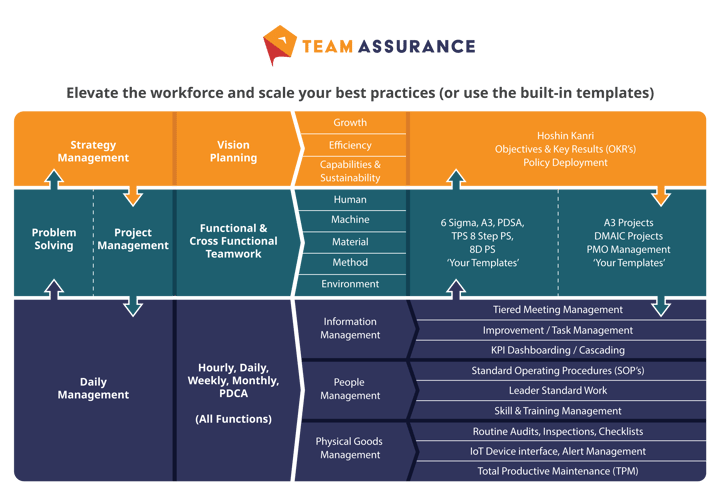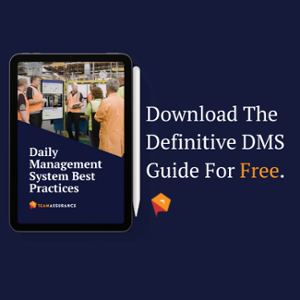Keeping Lean Simple

Why do we constantly look for complicated and ‘sexy’ solutions to our problems when the ultimate sophistication, effectiveness and longevity is to be found in simplicity?
All too often when challenged to make improvement in our process environment we look for the complicated ‘shiny objects’ rather than the basic and mundane.
There are two aspects to this mindset – one is that more people, bigger, faster, better equipment will not be the magic wand that solves our problems quickly and easily. Secondly we have the question, “are we currently doing everything we can to fully optimise the resources our disposal?
A supplementary question is, “do we actually know what the answer to our problem is, or are we just jumping to conclusions?”
Improvement Comes In Small Steps
As human beings we tend to choose the path of least resistance in our improvement journeys. This is true of both our work and our personal lives. Improvement is boring; it takes time, effort, practice, and discipline. It takes long periods of discomfort and not being good at something before mastery begins to kick in. We must battle real resistance in our brain as we try to change old habits for new and different ways.
We can view simplicity as things being too simple. We dismiss them or we lack the patience to follow the methods and routines that will develop the skills and knowhow to facilitate the improvement we seek.
Improvement tends not to happen in quantum leaps and step changes. It generally happens through very small iterations - often imperceptible. The power in this is that the small, and ideally daily, accumulation of iterations result in a compounding effect.
From an organisational perspective the more that individual people practice a learning and improvement mindset the compounding effect grows to a critical mass. This gains momentum and velocity as more people engage, taking ownership and responsibility of the improvement process. The ownership of this process also means that over time improvement routines become habitual. This is key to sustaining them over the long term.
Necessity Often Drives Improvement
The well-known proverb ‘necessity is the mother of invention’ says it all. Innovation is about constantly challenging ourselves to find a way froward with the resources we have at our disposal. Throughout human history we have found a way to do amazing things against the odds – it just took clear objectives, a willingness to learn and the patience to try and to fail repeatedly through experimentation until improvement was found.
Consider the sublime example of Thomas Edison’s pursuit of a practical and affordable light bulb for domestic use. He famously tested over 6000 filament materials and executed approximately 1200 experiments to make this breakthrough.
We also have ridiculous examples: Takeru Kobayashi smashed the Nathans Coney Island hotdog eating record in 2001 by eating 50 hotdogs in 12 minutes, doubling the previous record of 25. He did so by refining and focussing his competitive eating process so that he could simply eat 1 hotdog more easily.
The Overlap of Stoicism and Lean
We must never underestimate the power of the small, simple things. It is the cumulative effect of those small things practiced repeatedly that build the foundation for learning, sustainable success and mastery. Marcus Aurelius in Meditations states, “the impediment to action advances action, what stands in the way becomes the way”
What the great, stoic philosopher king means is that we must never give up. We must always challenge ourselves to view difficult circumstances and problems from multiple perspectives. We must always use these situations as opportunities to embrace discomfort and fear with a positive mindset.
We must grow and learn as teams and individuals rather than avoid them or seek the easy way out. We must aim to see things clearly, objectively and calmly. This can be only be done by taking the time to understand the current state of the process or the specific problem we are trying to solve.
In this way we can clearly define the objectives we are moving towards.
Keeping Lean Simple with PDCA
It is human instinct to want to solve problems quickly and easily rather than critically thinking it through. This often means we jump to conclusions and solutions without fully understanding the current situation or nature of the problem we face.
Part of this understanding has to be gained through experimentation and the learning process that comes from well designed experiments. Add to that a structured process of execution and you have Plan, Do, Check, Adjust (PDCA) methodology.
The moral of the story is that the most elegant and effective solutions to a problem are often the most simple solutions. These are typically found through blind luck or through executing a methodical approach to reaching a particular outcome or objective.
In our process environments, we must seek to harness the power of PDCA and Lean thinking daily through the engagement and ownership of our people at the frontline (the subject matter experts) then we are in a position to innovate and learn and improve – quickly.
Consider the Whole C.I. Framework, Not Just a Locally Optimised ‘Island'
Developing a Tiered Daily Management system that can handle the full PDCA loop is a top priority - but that requires us to view continuous improvement holistically. For any process to not only be sustained, but to thrive, it must be supported by adjacent processes and systems. So when implementing Lean consider how tools like Leader Standard Work, standardised problem solving techniques, and Standard Operating Procedures can bolster your efforts.
The schematic below of the TeamAssurance platform below shows how we designed an interconnected platform that avoids disconnected ‘Point Solutions’ (digital or analog) that do not help, and or even act as barriers, to achieving your organisation objectives.

Want to explore how digital-aids to Lean tools help keep things simple and effective? If you’re a Business in need, or a Consultant with clients in need, contact us for a demonstration of the TeamAssurance platform today.


